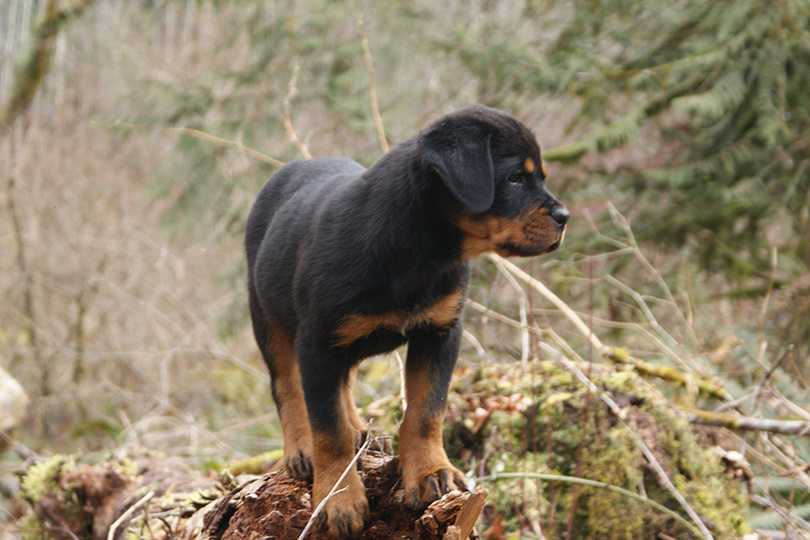Training
All About Training
Are you thinking of adopting a Rottweiler puppy? or struggling to train your Rottweiler? Is it that you are worried about your Rottweiler’s anger issues? We will offer you some helpful advice regarding your Rottweiler pet training if that is true.
Rottweilers were originally bred to herd and has a temperament to be a guard and assertive. When it comes to training a Rottweiler, pet owners must do plenty of research on their temperament and training before beginning. Let us discuss the different steps of training a Rottweiler:

First Step: Start Early
It is necessary to start your Rottweiler training at an early age. You will be easy build a bond if you start training your puppy between the ages of six weeks and six months. As your Rottweiler grows older, it will take more time, effort, and patience on your part. This breed is known for being intelligent, smart, spontaneous, active, and loyal. Their sole purpose is to make their owner happy, so don’t be discouraged if your Rottweiler is older and untrained.
Second Step: Understand Dominance
The idea behind dominance-based training is that we constantly establish rules that the dog will follow. In this way, you can improve your dog’s behavior and increase their level of obedience. Dominance is a training term that is often misused and misunderstood. By dominance, we don’t mean to be harsh on your pet; it just means kind and careful gestures to make your dog follow specific rules. The trainer must not show aggression towards their dogs. If they think that hitting their dog will prove their position, they are making it worse.
Third Step: Socialize Your Pet
It is crucial to make sure that your pet is comfortable around others around you. This can be done by taking your puppy for a walk in the park. Moreover, you can also take your puppy or dog over to your friend’s or relative’s house. You can also invite your friends over to your house so that your puppy can be happy and comfortable around them. Socializing in many ways is more productive than dog training. Keep all the social experience of your pet nice and positive so that it positively impacts him.
Fourth Step: Positive Reinforcement
Positive Reinforcement means training your dog by adding a reward to his actions, especially the ones you would like him to repeat. Training by the award is one of the easiest ways to set a friendly bond between the owner and his pet. It is okay if your pet doesn’t understand English or human behavior. However, he will soon understand which behavior brings him a welcome prize. This efficient dog training makes your training session feel like a game.
Fifth Step: Be Prompt With Your Expression
Be prompt with your action and expression; it helps your dog understand your gestures correctly. For example, if you want to reward your dog for sitting quietly on the sofa and you express your happiness by the time he just gets up and walks away, this may convey a different message to your pet. Your pet will be pleased to think that his owner has rewarded him for getting up and walking away. Guess what will happen next time? When you want him to sit quietly in the very same place, he gets up and walks away. He understands in this way, you will be happy again, just like the previous day.
Sixth Step: Simple Commands
Teach your simple pet commands like Sit, Paw, No, Down, Stay, Come, etc. Teaching commands will complete your training. These commands will make your pet behave more disciplined and appropriate. Your pet will become more obedient, command abiding, and respond promptly to gestures.
